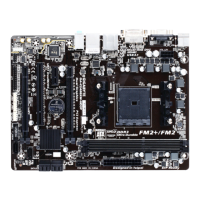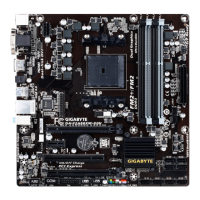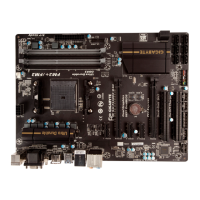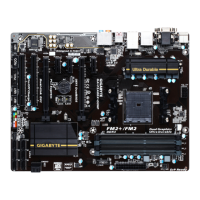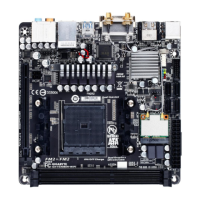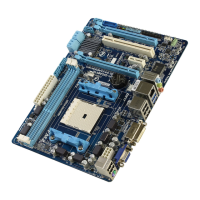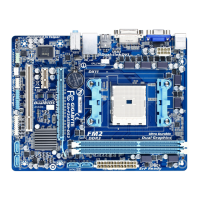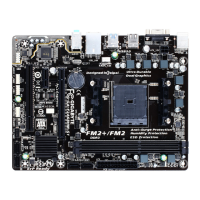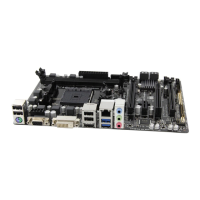
Do you have a question about the Gigabyte GA-F2A88XM-HD3 and is the answer not in the manual?
| Memory voltage | 1.5 V |
|---|---|
| Memory channels | Dual-channel |
| Memory slots type | DIMM |
| Number of memory slots | 2 |
| Supported memory types | DDR3-SDRAM |
| Maximum internal memory | 64 GB |
| Supported memory clock speeds | 1333, 1600, 1866, 2133 MHz |
| Processor socket | Socket FM2+ |
| Processor manufacturer | AMD |
| Compatible processor series | AMD A |
| Maximum number of SMP processors | 1 |
| Power fan connector | No |
| S/PDIF out connector | Yes |
| Number of SATA connectors | 8 |
| HDMI version | 1.4a |
| USB 2.0 ports quantity | 4 |
| Audio chip | Realtek ALC887 |
| Component for | PC |
| Power source type | ATX |
| Motherboard chipset | AMD A88X |
| Audio output channels | 7.1 channels |
| Motherboard form factor | micro ATX |
| Windows operating systems supported | Windows 7 Home Basic, Windows 7 Home Basic x64, Windows 7 Home Premium, Windows 7 Home Premium x64, Windows 7 Professional, Windows 7 Professional x64, Windows 7 Starter, Windows 7 Starter x64, Windows 7 Ultimate, Windows 7 Ultimate x64, Windows 8, Windows 8 Enterprise, Windows 8 Enterprise x64 |
| RAID levels | 0, 1, 5, 10, JBOD |
| Supported storage drive interfaces | SATA, SATA II, SATA III |
| Graphics card | Radeon HD 7000 |
| Maximum resolution | 4096 x 2160 pixels |
| Maximum graphics card memory | 2048 MB |
| Parallel processing technology support | 2-Way CrossFireX |
| Bundled software | Norton Internet Security |
| Ethernet interface type | Gigabit Ethernet |
| BIOS type | UEFI AMI |
| ACPI version | 2.0a |
| BIOS memory size | 16 Mbit |
| Depth | 174 mm |
|---|---|
| Width | 244 mm |
Learn how to find the motherboard revision number for updates and technical info.
Essential safety guidelines and preparation steps before installing hardware components.
Detailed specifications of the motherboard's hardware components, including APU, memory, and slots.
Step-by-step instructions for safely installing the APU (CPU) onto the motherboard socket.
Guide on how to properly install DDR3 memory modules into the motherboard slots.
Detailed settings for CPU/memory frequencies, voltages, and overclocking options.
Manage onboard devices like SATA, USB, LAN, and Audio settings within the BIOS.
Configure system power states, wake-up events, and power-on behavior.
Detailed guide on setting up SATA controllers and configuring RAID arrays in BIOS.
Instructions for installing necessary drivers after the operating system has been installed.
